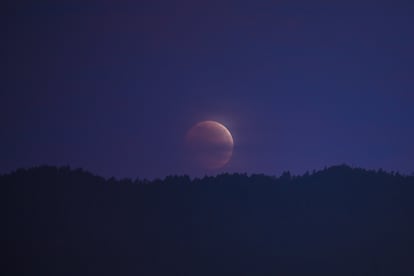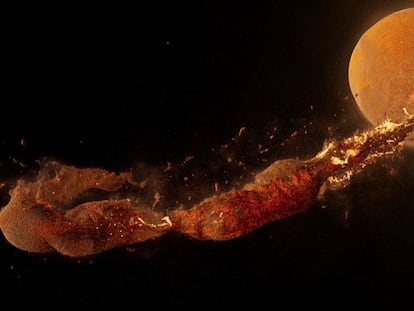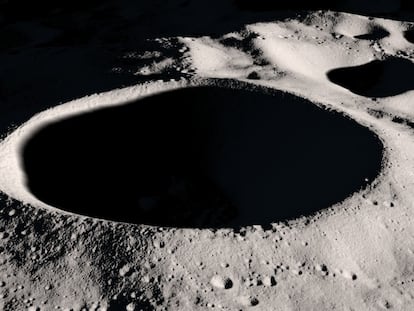The November 8, 2022 lunar eclipse: How, when and where to see it
The ‘Blood Moon’ will be visible in North and Central America


Early Tuesday morning, the Moon’s transit through Earth’s shadow will cause a total eclipse, the second of the year and the last of its kind until 2025. At its peak, Earth’s natural satellite will take on a reddish hue for ninety minutes while heading west.
Where can the lunar eclipse be seen?
With the Moon over the Pacific Ocean and North America, the November 8 eclipse will be visible in East Asia, Australia, Canada, the United States, Mexico, Central America, Colombia, and the northernmost regions of Peru and Venezuela. The further north the observer is, the easier it will be for them to spot the Moon high in the sky.
What time will the lunar eclipse be?
In Mexico, the partial eclipse will begin at 3.09 on Tuesday with the Moon’s entry into the umbra, the darkest region of the Earth’s shadow. In this phase, which will last more than an hour, the lunar disk will gradually disappear from the view of the terrestrial observer as it moves through the shadow. By 3.45, half of the lunar surface will be eclipsed within the umbra, according to NASA’s Goddard Space Flight Center.
The total phase of the eclipse will take place half an hour later, at 04.17. Completely immersed in the umbra, the Moon will turn red. The optical phenomenon is due to the effect of the Earth’s atmosphere in scattering sunlight that blocks short, blue and violet wavelengths and favors the passage of long, red waves, as at each sunrise and sunset.
The so-called “Blood Moon” will remain visible for the next hour and a half, the best time to observe the phenomenon and take pictures. Like any lunar eclipse, it is safe to view with the naked eye and no optical filter is required. Although the Moon will be near the point of its orbit farthest from Earth (known as its apogee), and may appear slightly smaller, in clear skies free of light pollution, the ochre hue will be more apparent. Binoculars or a simple telescope can allow the viewer to capture greater detail of the lunar maria and craters.
The total phase will culminate at 5.42 in the morning, when the Moon begins to leave the Earth’s umbra, gradually returning to its characteristic hue. At 6.14, more than 50% of the lunar surface will be visible. The phase will end after half an hour, coinciding with the sunrise and the Moon’s disappearance behind the horizon.
Sign up for our weekly newsletter to get more English-language news coverage from EL PAÍS USA Edition
Tu suscripción se está usando en otro dispositivo
¿Quieres añadir otro usuario a tu suscripción?
Si continúas leyendo en este dispositivo, no se podrá leer en el otro.
FlechaTu suscripción se está usando en otro dispositivo y solo puedes acceder a EL PAÍS desde un dispositivo a la vez.
Si quieres compartir tu cuenta, cambia tu suscripción a la modalidad Premium, así podrás añadir otro usuario. Cada uno accederá con su propia cuenta de email, lo que os permitirá personalizar vuestra experiencia en EL PAÍS.
¿Tienes una suscripción de empresa? Accede aquí para contratar más cuentas.
En el caso de no saber quién está usando tu cuenta, te recomendamos cambiar tu contraseña aquí.
Si decides continuar compartiendo tu cuenta, este mensaje se mostrará en tu dispositivo y en el de la otra persona que está usando tu cuenta de forma indefinida, afectando a tu experiencia de lectura. Puedes consultar aquí los términos y condiciones de la suscripción digital.










































